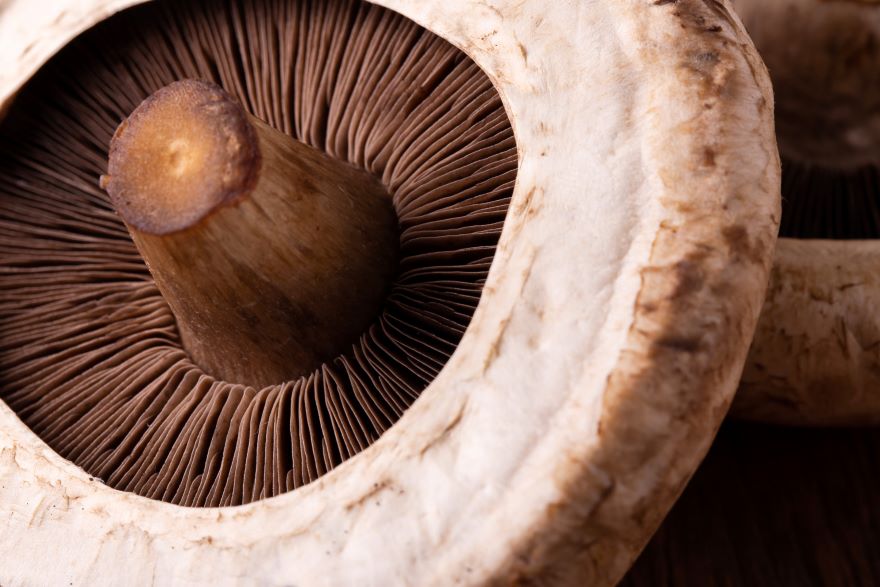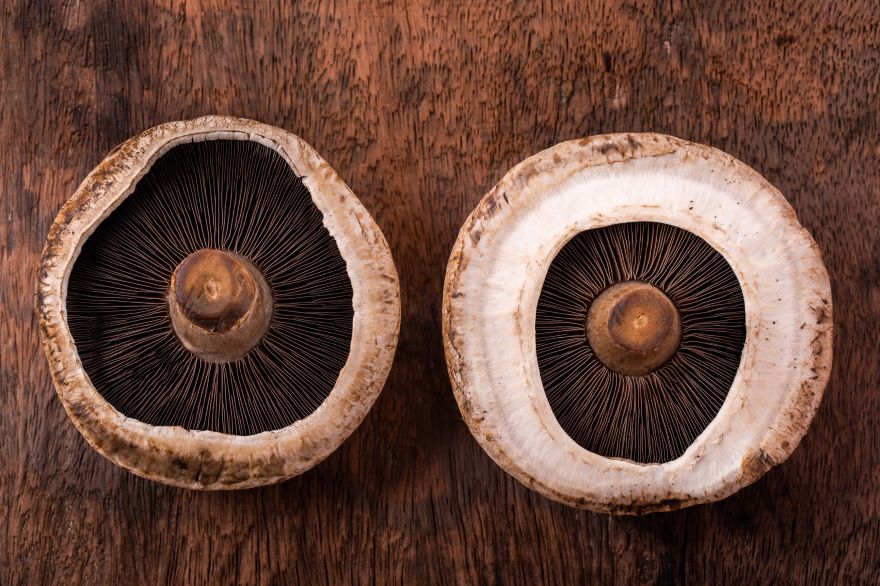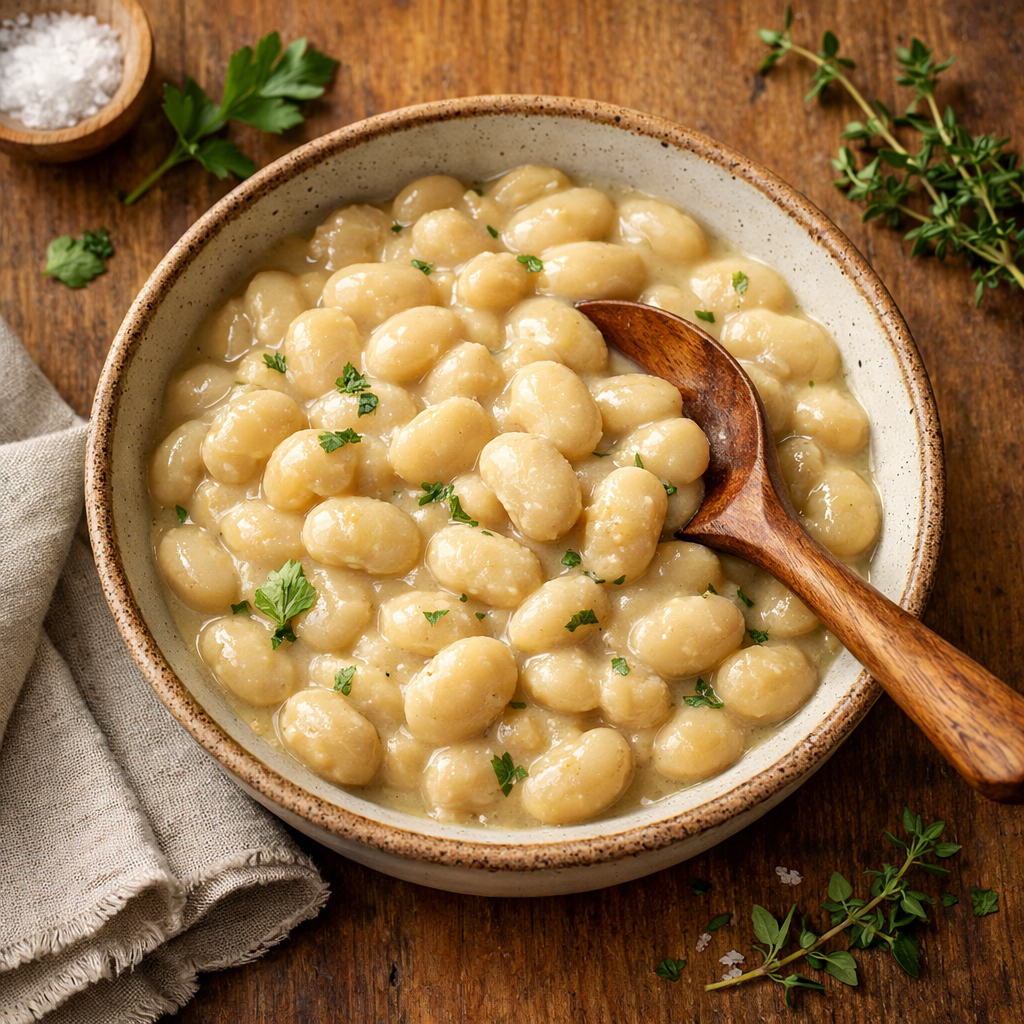Portobello mushrooms feature a meaty texture and earthy flavor, making them a popular ingredient in various dishes. However, there are concerns about their potential negative effects of Portobello mushrooms on human health. It’s essential to understand these risks and take necessary precautions when consuming these otherwise delicious fungi.
Recent discussions about portobello mushrooms have focused on the possible presence of harmful compounds and links to health issues. Some studies have raised concerns about certain substances found in portobellos, such as hydrazines and agaratines, which could contribute to negative effects when consumed. As a result, it’s crucial to consider different culinary techniques and incorporate various mushrooms in a balanced diet to mitigate these potential risks.
Key Takeaways
- Portobello mushrooms contain compounds that could pose health risks.
- Cooking methods can help reduce potential negative effects.
- Incorporating a variety of mushrooms ensures a balanced diet.

Understanding Portobello Mushrooms
As someone who enjoys learning about different types of fungi, I’d like to share some interesting insights about Portobello mushrooms. Portobello mushrooms, scientifically known as Agaricus bisporus, belong to the same species as button mushrooms and cremini mushrooms. The primary difference is that Portobellos are the mature version of these fungi, which explains their larger size and characteristic flavor. Let me provide you with a brief overview of these mushrooms to help you better understand them.
People widely cultivate Portobello mushrooms across the globe due to their unique taste, firm texture, and large, flat caps. These edible fungi, recognized by their tan-to-brown color and growing up to 6 inches in diameter, add depth and savoriness to various dishes or serve as a meat substitute in plant-based diets.
It is important to note that Portobello mushrooms are related to both button mushrooms and cremini mushrooms. All three are essentially different stages of the same species:
- Button mushrooms: These are the immature stage of Agaricus bisporus. They have small, white caps and are very mild in flavor.
- Cremini mushrooms: These are slightly more mature than button mushrooms, featuring a light brown color and denser texture with a richer flavor.
- Portobello mushrooms: These fully matured mushrooms have the largest caps of the three, boasting a deep, earthy flavor and hearty texture.
Nutritional Content
Comparing the nutritional content of these mushrooms, Portobellos tend to have higher levels of certain minerals, such as selenium and potassium. They are also an excellent source of vitamins B2 and B3. Despite their benefits, it’s important to be aware of some potential negative effects associated with Portobello mushrooms, such as the presence of certain toxins like hydrazine and agaritine. However, these concerns are relatively minor when consumed as part of a varied and balanced diet.
Next time you enjoy a dish containing Portobello mushrooms or prepare them yourself, remember the fascinating aspects of these fungi and their place within the Agaricus bisporus species.
Health Risks of Eating Portobello Mushrooms
Allergic Reactions and Poisoning
I’ve noticed that some people may experience allergic reactions to mushrooms, including portobellos. Symptoms of a mushroom allergy can include itching, swelling, and difficulty breathing. In severe cases, consuming portobello mushrooms could lead to anaphylaxis, a life-threatening allergic reaction. Additionally, if a person consumes a toxic or contaminated mushroom by mistake, it can also cause poisoning.
Digestive Issues and Gastrointestinal Discomfort
Many individuals, including myself, can face digestive issues when eating portobello mushrooms. Consuming them can potentially cause bloating, gas, and diarrhea. Moreover, eating raw or undercooked mushrooms can pose a higher risk of gastrointestinal discomfort, as they contain a compound called chitin, which our bodies cannot digest properly.
Long-term Health Concerns
When eating portobello mushrooms on a regular basis, I’m always aware of possible long-term health risks. It is suggested that portobello mushrooms can be a potential source of carcinogens. To reduce this risk, I tend to remove the gills under the cap before cooking, as they may contain a carcinogenic compound. Furthermore, cooking methods that enhance the meaty flavor without adding harmful compounds, such as sautéing and roasting, have been found to improve the nutritional and taste profiles of mushrooms.
That said, it’s good to keep in mind that overall moderation and a varied diet are key to minimizing long-term health risks associated with consuming portobello mushrooms.
Culinary Tips for Safer Consumption
Proper Cooking Methods
When I prepare portobello mushrooms, I always make sure to cook them thoroughly. Cooking helps reduce the levels of a compound called agaritine, which research has linked to an increased risk for developing certain types of cancers. Methods like roasting, grilling, or sautéing ensure even heating and reduce health risks associated with the mushrooms.
Tip: When sautéing, use a little oil or butter and sear the mushrooms until they become slightly browned and crisp on the edges.
Moderation in Diet
While portobello mushrooms have many health benefits like dietary fiber and essential minerals, it’s important to consume them in moderation. Overindulging in any food, even nutritious ones, can cause imbalances in the diet. I like to occasionally incorporate them into my meals, such as adding cooked mushrooms to salads, pasta dishes, or as a main course for a delicious, nutrient-rich dinner.
Selecting Quality Mushrooms from Reputable Suppliers
As with any ingredient, selecting premium quality mushrooms is vital for the best flavor and safety. I ensure that I purchase my portobello mushrooms from a reputable supplier. This helps me avoid potential contamination and minimize health risks. While shopping, I look for mushrooms that are firm, plump, and free of bruises or blemishes.
Opting for mushrooms that have been treated with methods like gamma and electron beam irradiation can also be beneficial, as these technologies help preserve the mushrooms by reducing their perishability.
By following these simple culinary tips, I can enjoy the delicious taste of portobello mushrooms while also benefiting from their nutritional properties, all while minimizing potential negative effects.
The Role of Portobello Mushrooms in a Balanced Diet
When it comes to a balanced diet, it’s essential to include a variety of foods that provide vitamins, minerals, fiber, and other nutrients. As a regular consumer of portobello mushrooms, I can attest to the fact that they can play a role in contributing to a balanced diet. Portobello mushrooms not only offer a delicious taste and meaty texture, but they also have some health benefits that deserve attention.
Portobello mushrooms are a good source of essential vitamins and minerals. They provide the body with vitamin B, vitamin D, selenium, and potassium. Vitamin B is necessary for maintaining a healthy nervous system and transforming food into energy. Vitamin D, on the other hand, is crucial for bone health and can be scarce in some diets, especially those that avoid dairy products or sun exposure. Selenium is an antioxidant that protects the body from cell damage and supports the immune system. Lastly, potassium helps maintain stable blood pressure levels and supports muscle and nerve function.
Another important aspect of a balanced diet is the consumption of sufficient dietary fiber. Incorporating portobello mushrooms into your meals can be a good way to increase your daily fiber intake. I find that their high fiber content not only aids digestion but also helps me feel fuller for longer, supporting healthy weight management.
Maximizing Health with Portobello Mushrooms and a Diverse Diet
Portobello mushrooms also boast anti-inflammatory and antioxidant properties. The antioxidants in these mushrooms, like all other mushrooms, help combat free radicals that cause cell damage and can lead to various diseases. Incorporating portobellos into a balanced diet can contribute to overall health and well-being in the long run.
It’s worth noting that moderation is key, and it’s important not to rely solely on portobello mushrooms for these vital nutrients. As a part of my own diet, I enjoy including a diverse array of fruits, vegetables, whole grains, lean proteins, and healthy fats to meet all my nutritional needs.
In conclusion, having portobello mushrooms as a part of your balanced diet can provide various health benefits. However, it is essential to diversify your food intake and choose a wide range of foods to optimize your overall health and well-being.
Mushroom Alternatives and Varieties
If you’re looking to try some other interesting and delicious types of mushrooms besides the Portobello, allow me to share a few of my favorites. These mushrooms not only offer a variety of flavors and textures but also provide numerous health benefits.

Shiitake Mushrooms: These are a popular choice for their meaty texture and rich, earthy flavor. Shiitake mushrooms pack nutrients such as B vitamins and essential amino acids. They also support immune health and serve as an excellent alternative to Portobello in various dishes.

Oyster Mushrooms: These mushrooms have a delicate texture and light flavor that works well in a range of dishes. Oyster mushrooms are an excellent source of vitamins, minerals, and antioxidants that contribute to overall well-being.

Cremini Mushrooms: If you’re looking for something similar to Portobello mushrooms, Cremini might be a perfect choice. They are actually the younger version of Agaricus bisporus, the same species as Portobello, commonly known as button mushrooms. They have a similar, yet slightly milder flavor and can be used interchangeably with Portobello in many recipes.

Maitake Mushrooms: Also known as Hen of the Woods, Maitake mushrooms have a unique shape and a slightly fruity flavor. They are known for their potential immune-boosting properties and are a great addition to any dish that calls for mushrooms.
Incorporating a variety of mushrooms into your diet not only offers an exciting culinary experience but also allows you to enjoy a range of nutritional benefits. So, go ahead and explore these flavorful fungi and find your new favorite!
Frequently Asked Questions
What symptoms might indicate poisoning from consuming portobello mushrooms?
As a fungus enthusiast, I have personally come across people who experienced symptoms of poisoning after consuming portobello mushrooms. These symptoms may include vomiting, diarrhea, abdominal pain, and nausea. In general, individuals react differently to different mushrooms, so it’s essential to be aware of these potential adverse reactions when eating any type of mushroom.
What are the known adverse effects of agaritine in portobello mushrooms?
I have read extensively about the adverse effects of agaritine, a compound found in portobello mushrooms. Some research suggests that agaritine might be a potential carcinogen, causing concern about regular consumption of portobello mushrooms. Despite this, many people still enjoy them without any health issues, as further research is needed to confirm these claims.
How can hydrazines present in portobello mushrooms affect health?
In my research on the negative effects of portobello mushrooms, I found that they can contain hydrazines, which are considered toxic chemicals. The potential health effects of hydrazines include damage to the liver, kidneys, and even the nervous system. However, it’s important to note that cooking methods, like grilling or baking, can break down hydrazines, reducing their presence in the mushrooms.
Is there a specific preparation method for portobello mushrooms to minimize negative effects?
As someone who enjoys cooking with mushrooms, I have experimented with different preparation methods. To minimize the potential negative effects of portobello mushrooms, I recommend grilling, baking, or sautéing them, as these methods can help break down harmful compounds, such as hydrazines.
Are there any risks associated with eating the gills of portobello mushrooms?
While exploring the world of mushrooms, I learned that there’s a debate about the safety of consuming the gills of portobello mushrooms. Some people believe it’s best to remove the gills before cooking, as they can potentially harbor toxins or allergens. However, others argue that the gills are safe to eat and provide more flavor. My advice would be to exercise caution if you have a history of mushroom allergies or sensitivities.
What controversies surround the safety of consuming portobello mushrooms?
In my quest to learn more about portobello mushrooms, I discovered a range of controversies, such as their potential carcinogenic properties due to agaritine and the presence of hydrazines. These concerns have sparked debates, leading to Paul Stamets discussing portobellos on Joe Rogan’s podcast and other sources questioning their safety. It’s essential for individuals to stay informed and make their own decision on whether including portobello mushrooms in their diet is right for them.

*We may earn a commission for purchases made using our links. Please see our disclosure to learn more.



